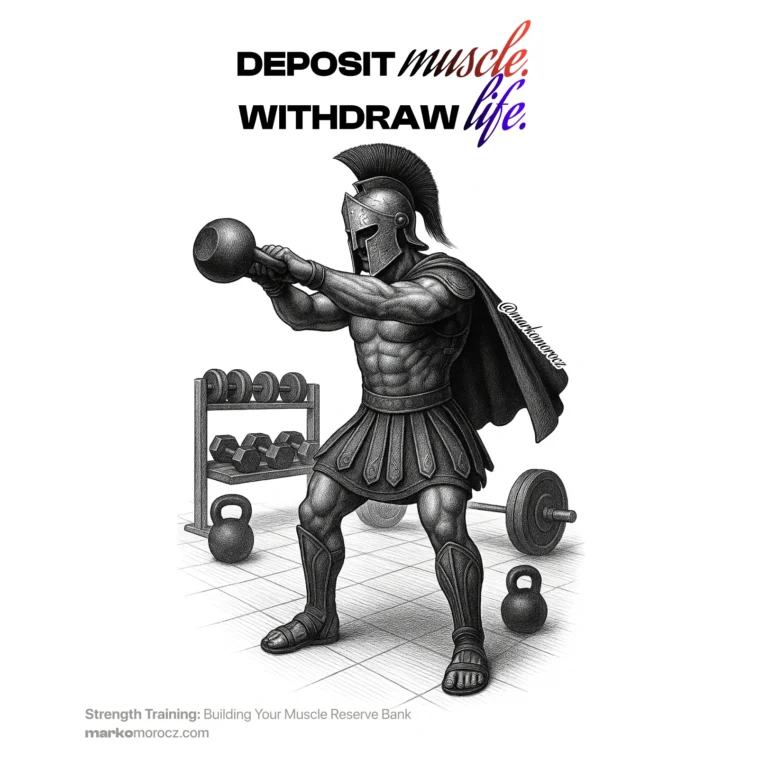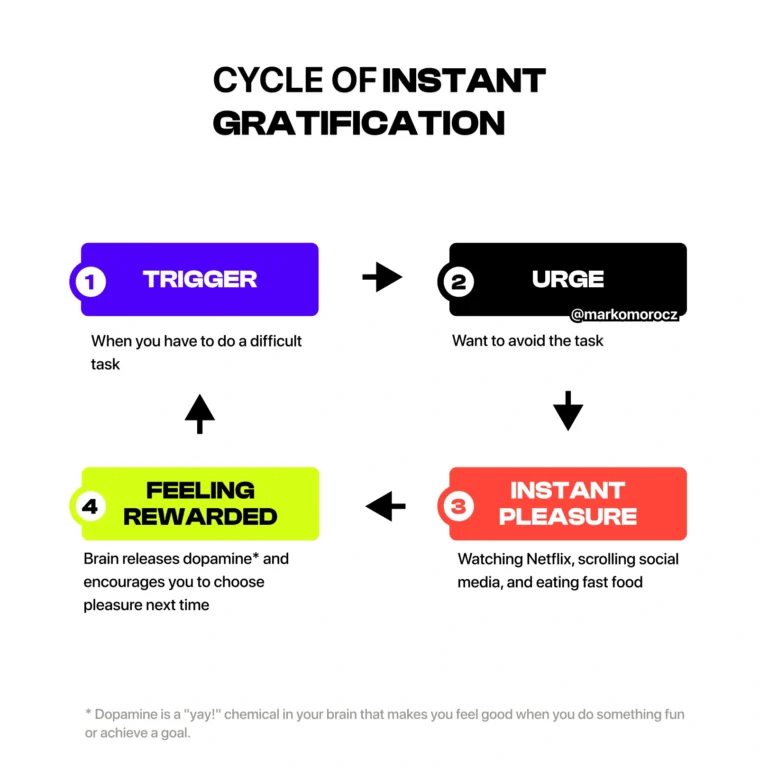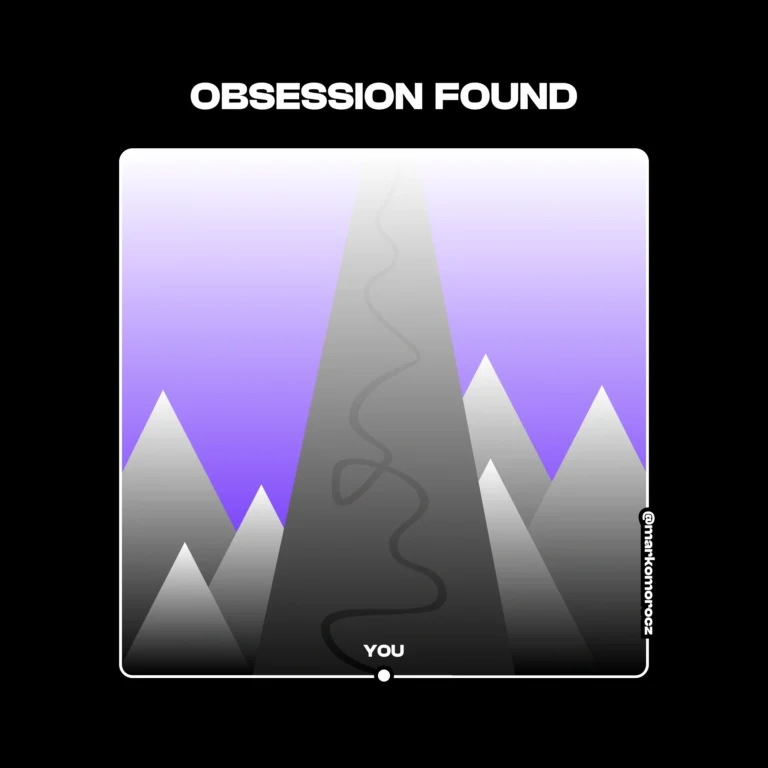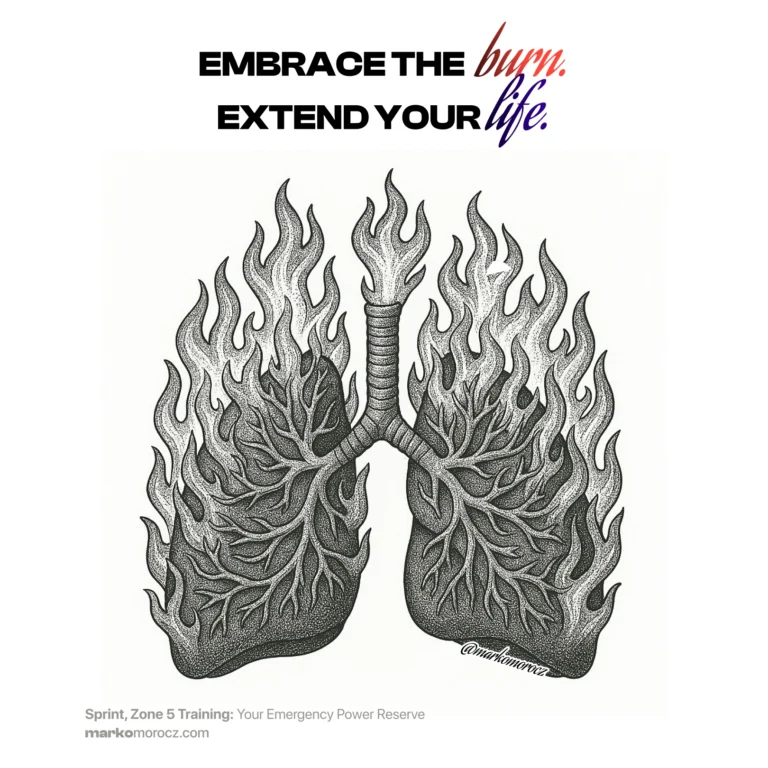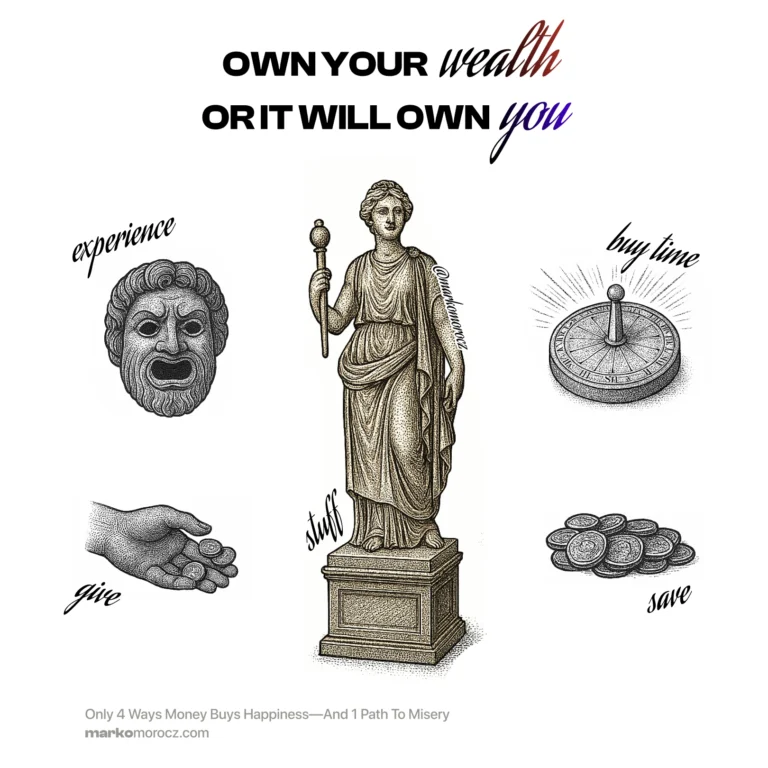Environment Design: Your Stress-Proof Life
Your environment owns you.
Not the other way around.
The spaces you occupy, the people you surround yourself with, the media you consume—they shape your stress response more than willpower ever could.

The Environment Edge: Why Willpower Fails
Willpower is overrated.
A shocking truth from behavioral science: Environment defeats willpower 90% of the time.1
You can’t outmuscle your surroundings:
- That cookie jar on your counter? It wins.
- That phone by your bed? It wins.
- Those negative people in your life? They win.
Elite performers don’t have superhuman discipline. They have superior environments.
They design worlds where good decisions become default decisions.
The Blue Zones Blueprint: Stress Management from the World’s Longest-Lived People
The Blue Zones—regions with the world’s highest concentrations of centenarians—offer a masterclass in environmental stress protection.
These people don’t practice “stress management techniques.” They live in environments that naturally reduce stress:
Okinawa, Japan:
- Community structure: Moai groups provide lifelong social support
- Physical design: Gardens requiring daily tending
- Time allocation: Regular periods of “yuimaru” (community collaboration)
Sardinia, Italy:
- Daily rhythm: Afternoon riposo (rest period)
- Social norms: Regular community gatherings and celebrations
- Work structure: Moderate, purposeful physical labor
Ikaria, Greece:
- Social prioritization: Unscheduled time for lengthy visits
- Environmental elements: Regular exposure to nature
- Temporal abundance: Lack of rigid schedules and time pressure
They don’t “manage” stress. They prevent it through environmental design.
The Wheel of Life Assessment: Finding Your Weak Points
Before redesigning your environment, you need to know where it’s failing you.
The Wheel of Life assessment maps your current reality across 8 life domains:
- Physical Environment: Spaces you occupy
- Health: Physical well-being
- Career: Work and achievement
- Finance: Economic security
- Relationships: Social connections
- Personal Growth: Learning and development
- Recreation: Play and enjoyment
- Contribution: Impact beyond self
For each domain, rate your current satisfaction (1-10).
Where are the dips in your wheel? Those are your stress vulnerabilities.
A wheel with deep dips won’t roll smoothly—it creates bumpy life experience.
From Assessment to Action: The Five Core Environmental Domains
The Wheel of Life reveals your stress vulnerabilities across eight life dimensions. But not all domains are created equal when it comes to stress management.
Five domains form your environmental foundation—the battleground where stress is either cultivated or conquered. Master these, and the other three domains naturally strengthen:
Core Environmental Domains:
- Physical: The spaces you occupy
- Digital: Your technology ecosystem
- Social: The people around you
- Temporal: How you structure time
- Body: Your physical state
These five aren’t random. They’re the primary arenas where environmental design has the most direct impact on your stress response system.
When you optimize these foundational environments, you create the ideal conditions for Personal Growth, Recreation, and Contribution to flourish naturally. Your capacity for learning expands when your digital environment is controlled. Your ability to enjoy recreation deepens when your temporal environment has true margins. Your impact and contribution multiply when your social environment energizes rather than drains you.
Think of it this way: The five core domains are the soil, water, and sunlight. The remaining three—Personal Growth, Recreation, and Contribution—are the natural harvest that emerges from fertile ground.
Let’s build that ground, domain by domain.
Domain 1: Physical Environment Design
Your spaces shape your mind.
The Science: Environmental psychology studies show physical surroundings directly impact cortisol levels, attentional capacity, and cognitive load.2
Key Elements to Optimize:
- Sensory Load
- Reduce visual clutter (increases cognitive load by 29%)3
- Optimize ambient noise (40-50 decibels ideal for focus)
- Control temperature (68-72°F/20–22°C optimal for cognitive function)
- Nature Access
- Incorporate plant life (reduces stress by up to 15%)4
- Maximize natural light (improves mood and sleep quality)
- Create nature viewing opportunities (even images help)
- Functional Zones
- Separate work and rest areas
- Create dedicated focus spaces
- Designate analog areas (no devices)
80/20 Implementation:
- Remove visual clutter from primary workspace
- Add 2-3 living plants to main environments
- Create one device-free zone in home
Domain 2: Digital Environment Design
Your devices deliver stress on demand.
The Science: The average person checks their phone 96 times daily—once every 10 minutes of waking life.5
Key Elements to Optimize:
- Notification Architecture
- Audit all app notifications (eliminate 80%)
- Convert visual alerts to scheduled batches
- Create VIP filters for true priority
- Information Diet
- Identify information vs. anxiety sources
- Schedule consumption windows (vs. continuous grazing)
- Establish input/output ratio (creation vs. consumption)
- Digital Boundaries
- Implement tech-free times (morning/evening)
- Create device-free zones (bedroom/dining)
- Establish response expectations (email, messages)
80/20 Implementation:
- Turn off all non-human notifications
- Set 2-3 scheduled check-in times for email/messages
- Create one tech sabbath period weekly (4+ hours)
Domain 3: Social Environment Design
Your relationships are your most powerful stress influencers.
The Science: Harvard’s 80-year study found social connection quality was the strongest predictor of health and happiness.6
Key Elements to Optimize:
- Relationship Portfolio
- Conduct energy audit (who adds/drains energy)
- Diversify social connections (different perspectives)
- Curate uplift-to-drain ratio (5:1 ideal)
- Communication Architecture
- Establish boundaries clearly and early
- Create expectation protocols
- Develop “no” templates for rapid response
- Support System Design
- Identify specific support needs (emotional, practical, informational)
- Assign explicit support roles
- Create regular connection rituals
80/20 Implementation:
- Increase time with top 3 energy-adding people
- Reduce exposure to top 2 energy-draining people
- Schedule one meaningful connection weekly
Domain 4: Temporal Environment Design
How you structure time determines your stress exposure.
The Science: Time scarcity perception increases cortisol by up to 37% compared to temporal abundance.7
Key Elements to Optimize:
- Rhythm Creation
- Establish consistent daily patterns
- Design weekly pulse (work/recovery cycles)
- Align with chronotype (morning/evening preference)
- Buffer Implementation
- Build transition periods between activities
- Schedule slack time (plan for 70% capacity)
- Create emergency margins
- Priority Architecture
- Implement time blocking
- Design energy-aligned scheduling
- Establish zero-progress days (deliberate rest)
80/20 Implementation:
- Schedule one 25-minute focus block daily
- Build 5-minute buffers between all meetings
- Create one weekly planning ritual (Sunday/Monday)
Domain 5: Body Environment Design
Your physical state is your mental foundation.
The Science: Physical interventions show the largest effect size in stress reduction studies.8
Key Elements to Optimize:
- Sleep Architecture
- Optimize sleep environment
- Establish consistent sleep/wake times
- Create wind-down rituals
- Movement Integration
- Incorporate non-exercise movement
- Match exercise to stress type (high/low intensity)
- Design recovery protocols
- Nutrition Strategy
- Stabilize blood sugar patterns
- Optimize meal timing
- Strategic supplementation
80/20 Implementation:
- Establish consistent sleep/wake times (±30 minutes)
- Implement one 10-minute daily movement break
- Eliminate sugar/caffeine after 2pm
The Stress-Proof Protocol: Your 21-Day Environment Redesign
Environmental change requires systematic approach.
Here’s your action plan:
Week 1: Assessment and Awareness
- Day 1-2: Complete Wheel of Life assessment
- Day 3-5: Track current environments (physical, digital, social, temporal)
- Day 6-7: Identify top 3 environment weaknesses
Week 2: Design and Preparation
- Day 8-10: Create designs for environmental changes
- Day 11-13: Remove environmental obstacles
- Day 14: Gather necessary resources
Week 3: Implementation and Refinement
- Day 15-17: Implement initial changes
- Day 18-20: Track impact and adjust
- Day 21: Establish maintenance protocols
The Continue-Stop-Start Method: Your Environment Upgrade Framework
For each domain, identify:
Continue: What’s working well that you should maintain
Stop: What’s creating stress that you should eliminate
Start: What’s missing that you should implement
This simple framework prevents overwhelm and focuses effort.
Example:
- Continue: Morning journaling ritual
- Stop: Checking email before breakfast
- Start: 10-minute nature exposure daily
Tracking Your Environment Impact: The Stress Response Metrics
Environmental changes create physiological benefits.
Track these metrics to validate your approach:
- Subjective Measures
- Perceived stress (1-10 scale)
- Energy levels (morning, afternoon, evening)
- Sleep quality rating
- Objective Measures
- Heart rate variability (morning reading)
- Sleep duration and continuity
- Recovery scores (from wearables like Whoop, Garmin)
- Behavioral Indicators
- Reaction to triggers (0-3 scale)
- Focus duration (time before distraction)
- Decision quality (satisfaction with choices)
Create a weekly scorecard to track progress.
Environment Upgrade: Creating Your No-Stress Zone
Every warrior needs a sanctuary.
The most powerful environmental intervention? Creating one space completely optimized for recovery.
Your No-Stress Zone requirements:
- Sensory Control
- Minimal noise pollution
- Optimal temperature (65-70°F for relaxation)
- Reduced visual stimulation
- Pleasant, natural scents
- Nature Elements
- Natural materials (wood, stone, plants)
- View of nature (or nature imagery)
- Natural light when possible
- Water element (sound or sight)
- Technology Boundaries
- No work devices
- No notification-enabled technology
- Limited or no screens
- Focus on analog activities
This isn’t luxury—it’s strategic recovery.
Elite athletes don’t apologize for recovery protocols. Mental athletes shouldn’t either.
Create a concrete visual representation of your ideal environment. The mind moves toward clear images. Give it precision.
The VUCA-Proof Life: Designing for Uncertainty
We live in a VUCA world:
- Volatility (constant change)
- Uncertainty (unpredictable outcomes)
- Complexity (multiple interconnected factors)
- Ambiguity (unclear meaning)
Environmental design doesn’t eliminate VUCA—it builds your capacity to navigate it.
Three principles for VUCA-proofing your environments:
- Simplicity: Reduce unnecessary complexity in all domains
- Flexibility: Build adaptable systems rather than rigid structures
- Redundancy: Create backup systems for critical functions
The goal isn’t a perfect environment. It’s an anti-fragile one.
The Stress-Environment Connection: Why This Matters for Longevity
Environmental stress isn’t just uncomfortable—it’s lethal.
Chronic stress from suboptimal environments:
- Accelerates telomere shortening (cellular aging)9
- Increases inflammatory load (disease precursor)10
- Disrupts mitochondrial function (energy production)11
- Impairs autophagy (cellular cleanup)12
Optimize your environments, and you don’t just feel better—you literally age slower.
In a 10-year study, participants in optimized environments showed biological aging markers 3-5 years younger than their chronological age.13
That’s a longevity boost equivalent to perfect nutrition or optimal exercise—but often easier to implement.
From Theory to Practice: Real-World Environment Design
Theory without application is just entertainment.
Here’s how I’ve applied these principles:
- Morning Environment
- Phone stays outside bedroom
- Haptic alarm instead of jarring sounds
- Morning sun exposure for circadian alignment 15 minutes after sleep
- Pre-prepared food and outfit remove decision fatigue
- Work Environment
- Dedicated workspace with purpose-only association
- Plant life within view
- Noise-canceling capability always available
- Water and healthy snacks within reach
- Notification-free periods pre-scheduled
- Evening Environment
- Blue light reduction after sunset
- Reading materials curated and accessible
- Screens eliminated 60 minutes before sleep
- Bedroom optimized for sleep only
These aren’t complex interventions. They’re simple environment tweaks with compound effects.
Your Next Steps: The Environmental Intervention Protocol
- Today: Complete Wheel of Life assessment
- This week: Implement ONE change in your physical environment
- This month: Create your No-Stress Zone
- This quarter: Apply the Continue-Stop-Start method to all domains
Remember: You don’t need to change everything at once. Small, strategic environmental interventions compound over time.
The environment you design today shapes the mind you live with tomorrow.
References
- Neal, D. T., Wood, W., & Quinn, J. M. (2006). “Habits—A repeat performance.” Current Directions in Psychological Science, 15(4), 198-202. ↩︎
- Ulrich, R. S., et al. (2008). “A review of the research literature on evidence-based healthcare design.” HERD: Health Environments Research & Design Journal, 1(3), 61-125. ↩︎
- McMains, S., & Kastner, S. (2011). “Interactions of top-down and bottom-up mechanisms in human visual cortex.” Journal of Neuroscience, 31(2), 587-597. ↩︎
- Park, S. H., & Mattson, R. H. (2009). “Therapeutic influences of plants in hospital rooms on surgical recovery.” HortScience, 44(1), 102-105. ↩︎
- Asurion. (2019). “Americans check their phones 96 times a day.” https://www.asurion.com/about/press-releases/americans-check-their-phones-96-times-a-day/ ↩︎
- Waldinger, R. J., & Schulz, M. S. (2010). “What’s love got to do with it? Social functioning, perceived health, and daily happiness in married octogenarians.” Psychology and Aging, 25(2), 422-431. ↩︎
- Mogilner, C., Chance, Z., & Norton, M. I. (2012). “Giving time gives you time.” Psychological Science, 23(10), 1233-1238. ↩︎
- Rosenbaum, S., et al. (2014). “Physical activity interventions for people with mental illness: A systematic review and meta-analysis.” Journal of Clinical Psychiatry, 75(9), 964-974. ↩︎
- Epel, E. S., et al. (2004). “Accelerated telomere shortening in response to life stress.” Proceedings of the National Academy of Sciences, 101(49), 17312-17315. ↩︎
- Liu, Y. Z., Wang, Y. X., & Jiang, C. L. (2017). “Inflammation: The common pathway of stress-related diseases.” Frontiers in Human Neuroscience, 11, 316. ↩︎
- Picard, M., & McEwen, B. S. (2018). “Psychological stress and mitochondria: A systematic review.” Psychosomatic Medicine, 80(2), 141-153. ↩︎
- He, C., et al. (2012). “Exercise-induced BCL2-regulated autophagy is required for muscle glucose homeostasis.” Nature, 481(7382), 511-515. ↩︎
- Blackburn, E. H., & Epel, E. S. (2017). “The telomere effect: A revolutionary approach to living younger, healthier, longer.” Grand Central Publishing. ↩︎
Got questions about optimizing your environment? Carve them below—I’d love to hear which changes make the biggest difference for you!
